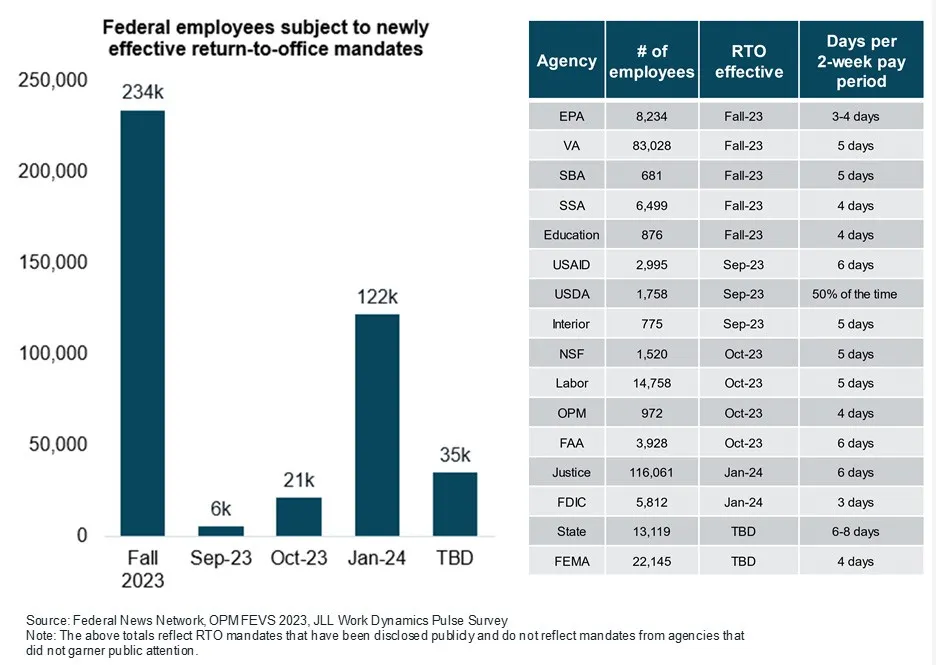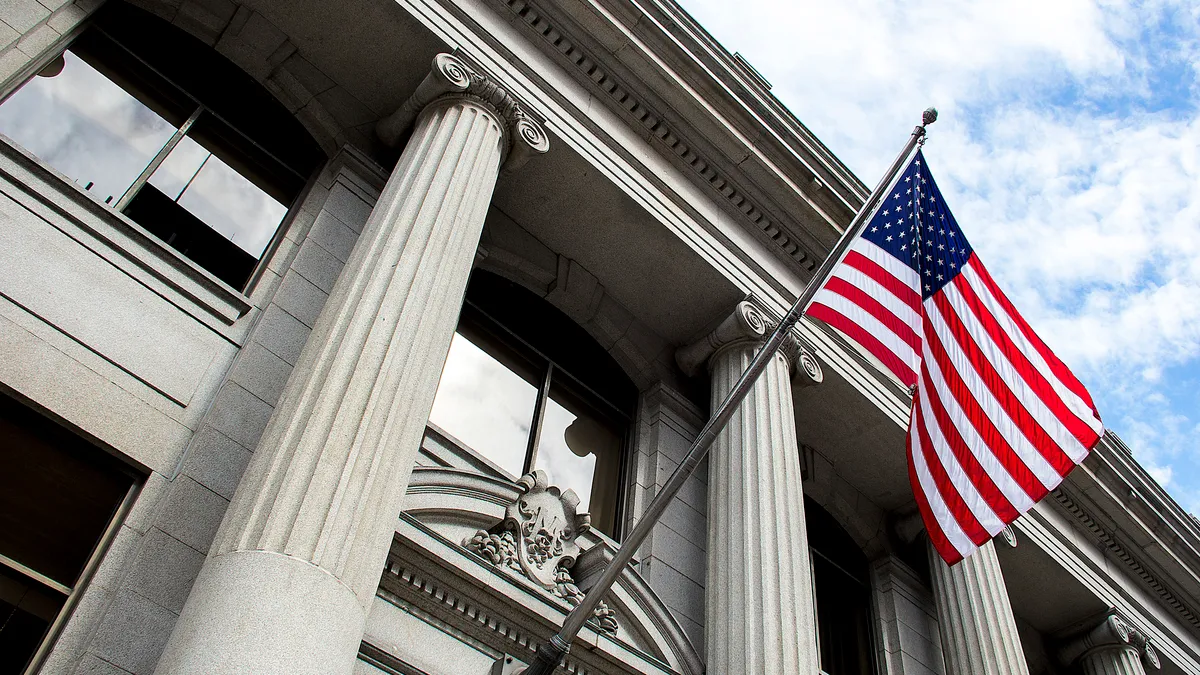Dive Brief:
- By January 2024, more than 400,000 federal employees will be required to be in the office for two or three days per week, JLL said, based on research it shared with Facilities Dive.
- The mandate would be new for at least 122,000 of those workers, the real estate services firm found.
- Despite the shift from telework to hybrid work, federal and state governments are “still hesitant to alter their space needs,” JLL said.
Dive Insight:
Vacant or underutilized federal office spaces and properties have been a persistent challenge exacerbated by a growing preference for telework on the heels of the COVID-19 pandemic. An Office of Personnel Management survey conducted this summer found that 89% of federal employees have a remote work agreement, with 40% teleworking between one and four days a week.
As the federal government adopts a hybrid work approach, numerous agencies are mandating that employees must be physically present in the office for at least two to three days per week, but other agencies stipulate that only managers, supervisors and senior-level staff need to report to the office at agency headquarters, JLL said.
To date, 16 federal agencies have announced return-to-office mandates, JLL said. Employees required to be in the office for at least three days a week include those at the U.S. Department of Justice, the State Department and the Federal Aviation Administration. The Justice Department’s more than 116,000 employees constitute the majority of those facing a new RTO mandate in January, along with the Federal Deposit Insurance Corp., JLL said.

A recent survey JLL conducted on hybrid work points to differences between its government clients and private-sector clients in terms of their expectations regarding shared seating arrangements for employees. Just 10% of government clients that JLL polled indicated that the majority of workers are using shared seating, compared with the 41% of private-sector clients that have begun implementing these arrangements. Furthermore, 43% of government clients said they do not anticipate any shared workpoints, compared with 13% of private-sector clients.
De’Von Williams, executive director of solutions development at JLL, attributed these differences to hurdles with consolidating federal office space and a slower pace of government activity compared with the more agile private sector, which tends to embrace open-landscape designs. “The way the older government facilities are designed — particularly facilities that have traditional office spaces, often with multiple offices and doors — creates these challenges,” Williams said in an interview.
With these anticipated return-to-office mandates, facilities managers must work to align with stakeholders on occupancy schedules and address the challenges of sporadic employee presence, said Williams, who works with public institution clients.
“For example, a company may have a group of individuals required to come in two days a week and another group required to come in three days a week. Does that mean the occupancy rate will be 75% on, say, a Wednesday? Does that mean we have to start cooling that facility earlier compared to, say, 25% [occupancy] on a Tuesday? Will we have more service requests on a Wednesday? Will we have an unusual energy load on Wednesday because of a strain on that system due to an influx of individuals? Do we need to turn off desk lights on Thursday? These are aspects that facilities workers and maintenance staff must consider,” Williams explained.
Effective coordination, benchmarking and occupancy sensors can help facilities staff adjust air heating and cooling times and manage service requests, he noted.
In October, the Office of Management and Budget agreed to implement the U.S. Government Accountability Office’s recommendation that it take charge of creating benchmarks to measure federal office space utilization to adjust to remote work models.















